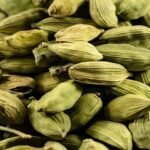Fertilizer sales increased by 3.6% in April-May due to good rainfall in growing areas
Fertilizer sales in India increased by 3.6% to 50.7 lakh tonnes (lt) in April-May of this fiscal year, owing to increased offtake due to good rainfall in growing areas.
Because fertilizer use during the kharif season is linked to rainfall, good rains in all regions, with the exception of a few states that were deficient until 10 days ago, have helped increase demand for crop nutrients. According to IMD data, rainfall across India is 1% higher than the long-term average from June 1 to July 24. Only 11 states, accounting for 22 percent of total geographical area, are deficient.
At the same time, experts said the increase in sales was due to the base effect, as there was a drop between April and May 2023. Fertilizer consumption fell by nearly 2%, with a 3% drop in urea from April to May last year. Fertilizer consumption was 48.9 liters a year ago.
However, di-ammonium phosphate (DAP) sales fell by 9.3% to 8.8 lt. According to industry sources, the current drop in DAP sales will put pressure on global prices, as India is one of the top buyers of the phosphatic fertilizer. Also Read | Budget Expectation – focuses on agri research, fertilizer subsidies, fight against climate change
MOP sales are up 52 percent
As DAP sales rise, overseas sellers raise their prices to compensate for the government’s subsidy burden in maintaining the maximum retail price (₹1,350/bag of 50 kg) for farmers.
According to the most recent official data, overall urea consumption increased by 2% in the first two months of the current fiscal year to 31.8 lt, up from 31.2 lt the previous year. Similarly, Muriate of Potash (MOP) increased by 53.2% to 1.7 lt from 1.11 lt, while complex increased by 21% to 8.4 lt from 6.94 lt the previous year. Complex fertilizer is made up of nitrogen (N), phosphorus (P), potassium (K), and sulfur (S) nutrients.
Also Read | Govt developing a blueprint to reduce fertilizer use, improve soil quality
In line with the government’s goal of becoming urea self-sufficient by 2025, imports have decreased slightly to 6.4 lt from 6.92 lt in April-May. Because urea is completely controlled by the government, including its import by a few select agencies, the industry faces no problems other than timely payment of subsidies. During fiscal year 2020-21, urea imports reached a record high of 98.28 lt.
Imports also fall
Overall fertilizer imports fell by 12.5% to 24.5 lt in April-May from 28 lt the previous year, with complex imports falling by 22.1% to 4.5 lt from 5.78 lt and DAP imports falling by 18.8% to 8.5 lt from 10.47 lt. Only MOP imports increased by 5.6% to 5.1 lt from 4.83 lt.
All fertilizer production was slightly lower at 81.2 lt versus 82.04 lt, with urea at 51 lt (49.8 lt), DAP at 6.6 lt (7.86 lt), complex at 15.9 lt (15.68 lt), and SSP at 7.7 lt (8.7 lt).


















Add Comment